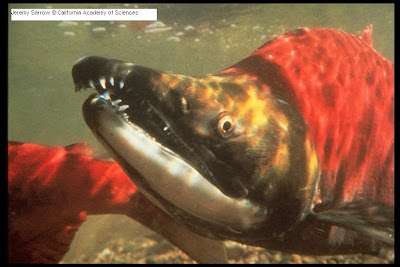This is one of those days when ugly means ugly. You know, we're taught by our institutions to respect every culture. We're all equal and all that. But that's just not so. This photo is proof. I've got a hard time respecting the culture/people that sponsor something like this.
UPDATE: Here's what Bambi slayer has to say about this:
This is a Louisiana Catahoula Curr, They are taditionally used to hunt Feral hogs and bay them up until the catch dog, that is usually a Pitbull or Pit Mix, catches up with the pack. He will charge head on and catch the boar or pig by the ears or snout. He will hold on until ordered off when the hunters catch up. The catch dog usually wears a collar that can be up to 12" wide to protect him from being cut by the tusks that are razor sharp. This picture was not taken in the woods but at a Hog dog trials, which is a truly barbaric form of entertainment but legal in Louisiana still.





















































